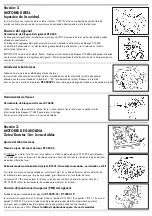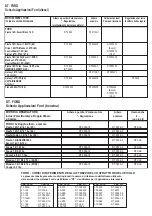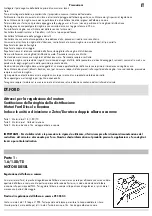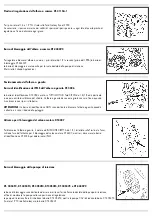
Camshaft Setting
Camshaft Setting plates are used on Ford diesels to accurately align a datum slot in the end of the camshaft
with the top face of the camshaft housing to hold the camshaft in TDC position.
Early diesels used Locking Pins to set the camshaft in ‘timed’ position
DT.3032-3 Camshaft Setting Plate
Used on 1.8 engines after 1996. Special cut-out section to avoid raised casting area.
This Plate is also used for all Ford 16v. Petrol Twin Cam engines.
DT.FORD
Engine Timing Tool Kit -
Timing Belt Replacement Applications
Ford Diesel & Petrol Engines
Including Unit Injection & Zetec/Duratec Twin Cams .
Section 1: Diesel Engines 1.6/1.8D/TD
Section 2: Diesel Engines - Unit Injection
Section 3: Petrol Engines 16v. Twin Cams
IMPORTANT: Always refer to the vehicle manufacturer’s service instructions, or proprietary manual, to establish the current
procedures and data. This Product Information Set details applications and the use of the tools with any general instructions
provided as a guide only.
Section 1:
1.6 / 1.8D/TD
DIESEL ENGINES.
EN
Precautions
Disconnect the negative pole from the battery before starting work.
NB:
Before disconnecting the battery, make sure that the owner knows the code for the car radio.
Do not use the wedge pins to block the engine when unscrewing or tightening the crankshaft pulley.
Never use the belt as a holding tool to block or remove the camshaft pinion nuts.
Never exert pressure to force on the pulleys and rollers at the point where the distribution belt arrives in position.
Do not fold the belt or turn it inside out or bend it less than a 25mm radius.
Do not use lever or force to put a belt in place.
Check the belt idlers, stationary rollers and water pump through rotation.
Check the alignment of pulleys and rollers.
Check there is no oil leak or seepage. If so, remedy the problem.
When replacing the distribution belt, check that the new belt is fitted with the right kind of tooth.
Comply with the belt tension
Comply with the tightening torques.
Comply with the rotation direction indicated by the arrows on the distribution belt
Never re-install a worn distribution belt, but replace it.
Never re-stretch a distribution belt, but replace it.
Replace the belt if it shows signs of wear and tear - friction, cracking, damaged, cut, eroded or worn teeth, worn wall, worn edges or clogged with oil.
Any damage caused to the belt must be thoroughly investigated so as to define the causes before re-assembling a new belt.
Never use solvents (Diluent, petrol, etc.) to clean the oil deposits on the surface of the belt. In case of doubt replace the belt.
Any cleaning must be carried out with care using a soft, dry brush.
Never turn the belt inside out to clean it or for inspection.
Always run the engine in the normal rotation direction, failing contrary instructions from the maker of the vehicle.




















